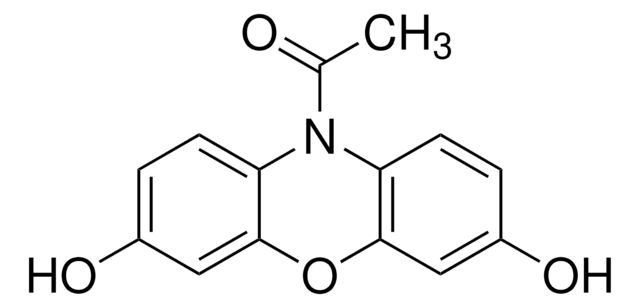MAK144
Fluorometric Intracellular Ros Kit
sufficient for 200 fluorometric tests (orange)
Synonym(s):
Fluorometric ROS Assay Kit
Sign Into View Organizational & Contract Pricing
All Photos(2)
About This Item
Recommended Products
usage
sufficient for 200 fluorometric tests (orange)
application(s)
cosmetics
food and beverages
detection method
fluorometric
relevant disease(s)
cancer; neurological disorders
storage temp.
−20°C
General description
Reactive oxygen species (ROS) are generated as a result of the reduction of oxygen during aerobic respiration and by various enzymatic systems within the cell. At physiological levels, ROS contribute to cell signaling and host defense. Increased ROS generation above the biological system′s detoxification capacity results in oxidative stress and cellular damage. The main damage to cells results from the ROS-induced alteration of macromolecules such as polyunsaturated fatty acids in membrane lipids, essential proteins, and DNA. ROS has been implicated in disease states, such as Alzheimer′s disease, Parkinson′s disease, cancer, and aging.
Application
Fluorometric intracellular reactive oxygen species (ROS) Kit has been used to evaluate the mitochondrial damage by mechanical ventilation (MV). It is also used to measure the production of intracellular ROS.
Suitability
This kit is suitable for the detection of intracellular ROS by fluorescence microplate reader, flow cytometer, or a fluorescent microscope with TRITC filter.
Principle
The Fluorometric Intracellular ROS Assay Kit provides a sensitive, one-step fluorometric assay to detect intracellular ROS (especially superoxide and hydroxyl radical) in live cells within 1 hour incubation. ROS react with a cell-permeable sensor, resulting in a fluorometric product (λex = 540/λem = 570 nm) proportional to the amount of ROS present. The assay can be performed in a convenient 96-well or 384-well microtiter-plate format.
Storage Class Code
10 - Combustible liquids
WGK
WGK 3
Flash Point(F)
Not applicable
Flash Point(C)
Not applicable
Choose from one of the most recent versions:
Already Own This Product?
Find documentation for the products that you have recently purchased in the Document Library.
Customers Also Viewed
Oxidized low density lipoprotein (ox-LDL) binding to ox-LDL receptor-1 in endothelial cells induces the activation of NF-KB through an increased production of intracellular reactive oxygen species.
Cominacini L, et al.
The Journal of Biological Chemistry, 275(17), 12633-12638 (2000)
High tidal volume induces mitochondria damage and releases mitochondrial DNA to aggravate the ventilator-induced lung injury.
Lin J, et al.
Frontiers in Immunology, 9, 1477-1477 (2018)
Reactive oxygen species (ROS) and response of antioxidants as ROS-scavengers during environmental stress in plants.
Das K and Roychoudhury A
Frontiers in environmental science., 2, 53-53 (2014)
Neurodegenerative diseases and oxidative stress.
Barnham K J, et al.
Nature Reviews. Drug Discovery, 3(3), 205-205 (2004)
Reactive oxygen species and reactive nitrogen species in peroxisomes. Production, scavenging, and role in cell signaling.
Luis A, et al.
Plant Physiology, 141(2), 330-335 (2006)
Our team of scientists has experience in all areas of research including Life Science, Material Science, Chemical Synthesis, Chromatography, Analytical and many others.
Contact Technical Service




